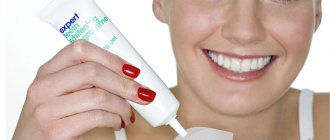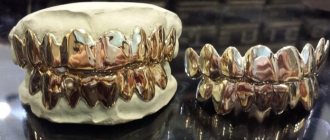There are universal products that can be used for medical purposes, in cosmetology, and in the household - these are baking soda and hydrogen peroxide, available to everyone. The effectiveness of their use in these areas has been tested by time and many, not succumbing to the advertising of modern cleaning products, continue to use safe “grandmother’s” products. There are simple and effective methods for cleaning kitchen utensils using baking soda (sodium bicarbonate) and hydrogen peroxide.
Benefits when used at home
Even before household products appeared, housewives used folk remedies to keep the kitchen clean. Popular among them were salt and peroxide. The household benefits of these products are as follows:
- effective fight against fat and old stains;
- environmental cleanliness;
- absence of harmful chemicals or allergens, which is important if there are children or allergy sufferers in the house;
- effective odor removal;
- disinfection, elimination of germs or bacteria;
- creating a whitening effect.
Baking soda in combination with oxygen peroxide helps remove complex stains and keep utensils and household appliances clean.
Recommendations from experts
Manufacturers of cookware recommend adhering to rules that help extend the life of the frying pan. It is important to follow preventive measures that prevent further contamination.
- When cooking and stirring food in a frying pan, you must use a wooden or plastic spatula.
- Use cleaning powders, scratching sponges, and scrapers as little as possible. This will prevent scratches on the inside of the pan.
- If the frying pan is often washed in the dishwasher, then you must clean it by hand once a month. In this case, you can easily notice the appearance of soot, which can be easily eliminated at the initial stage of its manifestation.
- Melamine sponges are well suited for cleaning ceramic products and enamel dishes. But they can only clean the outside.
- An aluminum frying pan should never be rubbed with an iron sponge. The damaged surface quickly oxidizes and the oxide gets into the food. Which will negatively affect human health.
- Baking soda or coarse salt helps get rid of rust on an old frying pan. After washing, be sure to heat the dishes so that the food does not burn.
Action
Baking soda and peroxide react to form a clear liquid. The molecules of this alkaline solution act on acids and eliminate them. Due to bactericidal, microbes or bacteria contained on the surface are eliminated.
The two products can also be combined with salted water or alcohol. These components are added to a solution of soda and peroxide to enhance the cleaning effect or add shine. However, they must be washed with gloves to avoid irritation on the skin.
How to choose a method for cleaning a frying pan
To properly clean an old frying pan from carbon deposits, first of all, determine what material it is made of. There are cast iron, aluminum and stainless steel frying pans.
In modern industry, cookware with non-stick coating is gaining increasing popularity. She requires careful and delicate care. Such pans are easy to clean, as their surface protects against the formation of carbon deposits on the dishes.
How does carbon deposits form on the coating of a frying pan?
Almost every day, meat is fried and stewed in a frying pan, and vegetables are sautéed. Frequent use of dishes leads to the formation of carbon deposits. This happens for the following reasons:
- small drops of boiling oil or melted fat fall on the walls;
- food particles stick to the bottom, and sometimes food burns;
- an open flame promotes the formation of soot.
It is better to wash any dishes immediately.
Even if you thoroughly wash the frying pan every time after use, you will not be able to avoid the formation of soot.
Why office glue and soda clean utensils well
Not everyone knows that many substances can be used for other purposes than their intended purpose. Stationery glue is used to connect fabric, paper and other surfaces, and it is also used to clean kitchen utensils. It contains synthetic and natural polymers that soften existing plaque, break up soot and dissolve fats, and remove calcium deposits.
Dirt can be easily removed with a spatula or washed off with hot water. Cleaning dishes in this way at home does not take much time, the main thing is to choose the appropriate type of stationery glue:
- Silicate glue contains trace elements (sodium, potassium), soda, and quartz sand. This composition copes well with a dense layer of carbon deposits on frying pans and pots.
- PVA contains acetone and polyvinyl acetate. The first component actively fights all kinds of contaminants and dissolves old fat. Helps wash dishes after large feasts, skewers and grill grates after kebabs and barbecues.
In its pure form, liquid glue is not suitable for cleaning dishes. It is supplemented with other components, such as laundry soap, soda, and hydrogen peroxide. Such mixtures are more effective. One ingredient enhances the effect of another. The end result is a perfect result.
Cleaning methods
Cast iron products have many advantages, so they are not cheap. Throwing away a good thing if it is heavily soiled, and even more so if it is slightly soiled, is impractical and wasteful.











